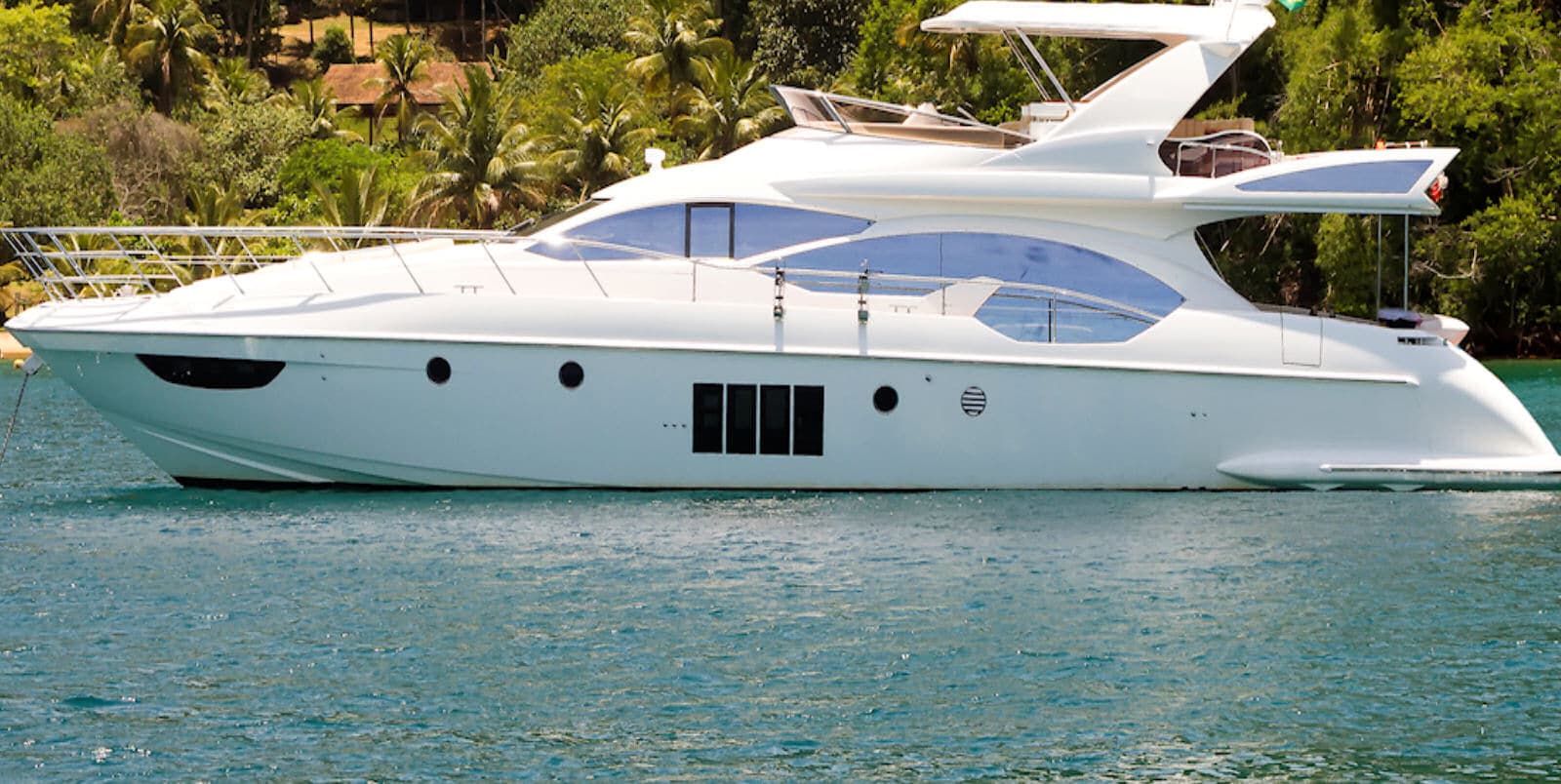We know this from aircraft construction: if it were only up to the engineers’ ideal, then such a jet would be nothing more than a tube with wings. Preferably without any windows, which would only disrupt the structural integrity of the whole construction.
But then the marketing experts come along and argue that passengers would like to have a view of the clouds and would even be prepared to pay a higher ticket price for it.
So the technicians retreat to their CAD workstations and reluctantly make dozens of holes in the newly designed aircraft using the “Cut Out” function.
The situation is comparable for boats. Old-school naval architects choose the size of portholes carefully. And if you take a look at the command bridges of ocean-going fishing trawlers, it is not uncommon to find cockpit windows the size of bulletproof glass. And fishermen are generally thrifty in nature. Without good reason, they would not accept the extra cost of expensive glass.
The trend towards panoramic windows
However, if you look around the boat shows today, you get the impression that many of the tried and tested virtues of naval architecture are a thing of the past. There is hardly a boat left whose hull is not littered with generous window areas. Yes, true panoramic windows are sometimes transplanted. Best of all, they are pulled up to 10 centimetres above the waterline so that you can watch the waves crashing against the boat as you fall asleep.
Admittedly, a room flooded with light creates a feeling of spaciousness and a feel-good atmosphere. And when implemented correctly with high-quality materials, today’s technology also offers a lot more scope for designing this kind of trendy ambience.
What’s more, manufacturers have now had several years to learn how to use these design elements correctly.
Keep an eye out when buying used boats!
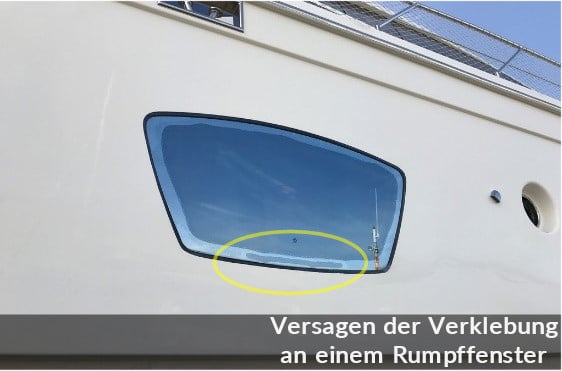
But what about those boats that were first delivered with such large window areas in the hulls and are now on the used market with 10 years or more? Boats that, in addition to their use in the exhibition hall, have already sailed through some heavy seas and have many slips or cranings behind them? Is it perhaps better to look twice to assess the condition of their windows?
In my opinion, the answer is a definite YES! Unless you are the owner of a shipyard and are happy to receive repair orders within the family.
Time heals all wounds
…as the saying goes. And for some areas of life this may even be true. However, the situation is quite different for many adhesives and plastics.
As rather light-shy species, they only moderately like long periods under UV light. They turn yellow, become dull or brittle. And you don’t want to notice any of this at the window of your owner’s cabin one day.
But if you walk around the marinas or talk to larger shipyards, you will unfortunately notice that repairs due to such defects are becoming more frequent. There have even been reports of skippers suddenly sitting outside because the window had completely blown out.
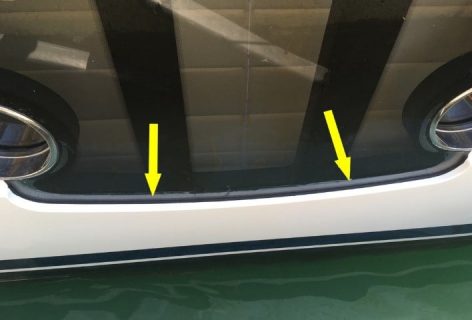
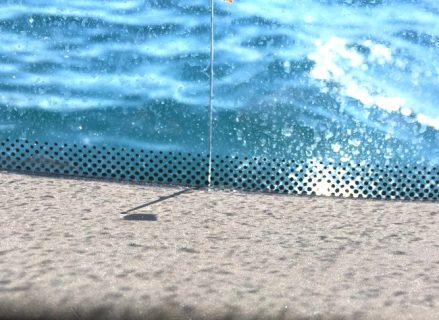
In an idyllic bay in the middle of the Kornati Islands, this may initially only provide a welcome breeze in the heated sleeping compartment. On a somewhat stormier passage, however, you wouldn’t want to imagine the consequences of such a defect.
Admittedly, bonding technology has developed significantly over the last 10 years. However, the problem is that it is often no longer possible to trace exactly which adhesives were used, especially on somewhat older used boats, and above all whether they were used CORRECTLY. In other words, whether these joints can withstand the constant warping of a hull in rough seas or when slipping in the long term. Especially as structural sheets are increasingly having to give way to the demands of wide, open spaces.
The same naturally applies to the window materials used.
And apart from the safety aspect, you should also bear in mind that replacing a larger hull window can easily cost 10,000 euros or more
What to look out for when buying boats with hull windows
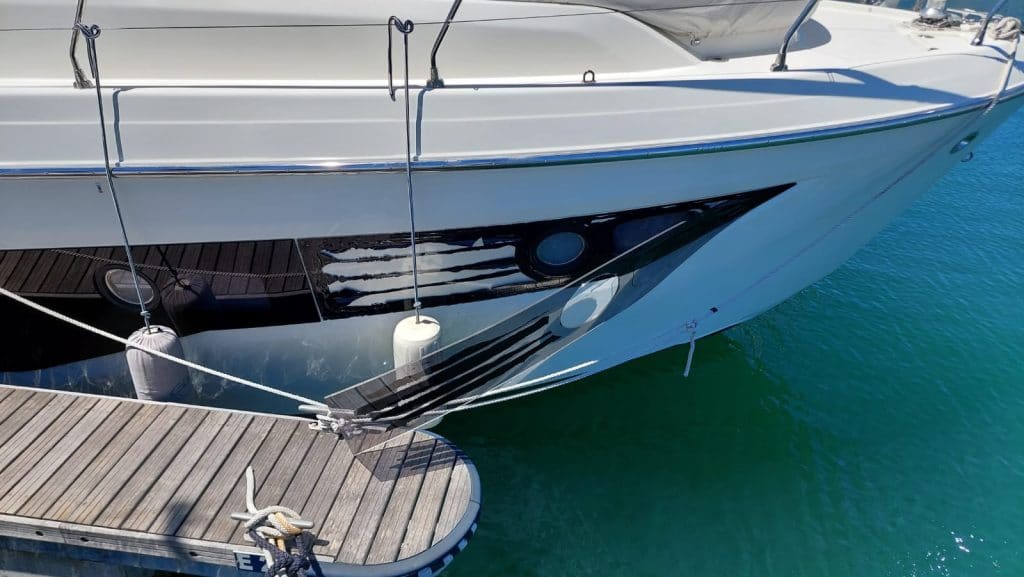
If you decide to buy a boat or yacht with large hull windows, you should therefore pay particular attention to the following points:
![]() With bonded windows, make sure that they have a blackened adhesive edge (similar to your car).
This serves as a primer and protects the adhesive underneath from harmful UV radiation.
With bonded windows, make sure that they have a blackened adhesive edge (similar to your car).
This serves as a primer and protects the adhesive underneath from harmful UV radiation.
![]() However, if the adhesive surface is visible, look out for signs of delamination.
Accumulations of air pockets or larger bubbles in the adhesive bed are a clear warning signal!
However, if the adhesive surface is visible, look out for signs of delamination.
Accumulations of air pockets or larger bubbles in the adhesive bed are a clear warning signal!
![]() In particular, check the edges of the windows carefully for cracks.
As with a stone chip on your car window, these can spread quickly and cause the window to fail.
In particular, check the edges of the windows carefully for cracks.
As with a stone chip on your car window, these can spread quickly and cause the window to fail.
![]() And last but not least, look for traces of moisture on the inside of the paneling or framing.
And last but not least, look for traces of moisture on the inside of the paneling or framing.
![]() If you discover a defect, it is advisable to obtain a cost estimate for a professional repair before purchasing and to take the estimated costs into account when negotiating the price.
If you discover a defect, it is advisable to obtain a cost estimate for a professional repair before purchasing and to take the estimated costs into account when negotiating the price.
With this in mind, I wish you an always unclouded and beautiful view!
Yours sincerely

Ing. Ingolf Schneider, MASc (AssocRINA)
Certified surveyor for boats and yachts up to 24m (LLoyds Maritime Academy, American Boat and Yacht Council).
Member of the Royal Institution of Naval Architects.
